The Yodo River (淀川) originates in Lake Biwa (琵琶湖), the largest lake in Japan, and is called the Seta River (瀬田川) in its upper reaches and the Uji River (宇治川) in the middle. After joining the Katsura River (桂川) and the Kizu River (木津川) at the Kyoto-Osaka border, it becomes the Yodo River and flows into Osaka Bay. It is a major river and has long been widely used as an essential source of water for daily life and industry.
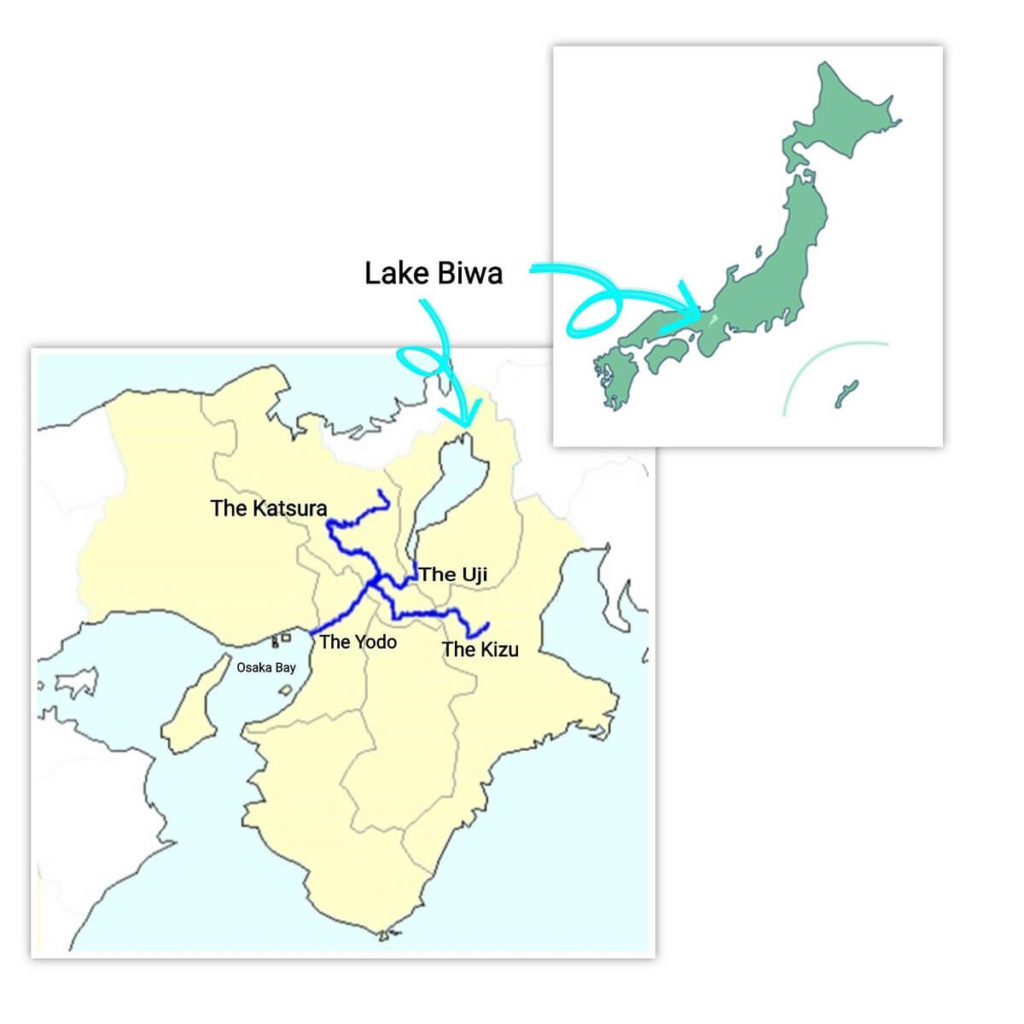
The Yodo River was once a vital route for boat traffic between Fushimi in Kyoto and Hachikenya-Hama in Osaka in the Edo period (1603-1868). Lodging towns called shukuba-machi (宿場町) flourished along the Yodo River, and Hirakata City was one of them. (Refer to my previous article if you like.) Now in this article, I would like to add something about the Yodo River, which is closely connected to Hirakata City.
Kurawanka-fune
Kurawanka-fune were small boats, mainly from the Hirakata area, that approached large boats called Sanjikkoku-bune (三十石船) plying the Yodo River to sell food and drink to passengers during the Edo period. The word “kurawanka” was used to attract passengers’ attention, though it sounds a bit rough, as in “Want some sake?” or “Want some rice cakes?” The term “kurawanka” (wanna eat?) became a common expression and led to the name “Kurawanka boats.”

Steamboats later replaced Kurawanka boats, and when railways and roads were developed, boat transport declined. There is now an active movement to revive boat transport.
The Yodo River Cruise(淀川浪漫紀行)
This cruise is a two-and-a-half-hour boat trip between Hirakata and Hachikenya-Hama in Osaka. Two routes, going upstream and downstream, are currently offered only in May, June, and November, when the water level is stable. Passengers can experience the atmosphere of the busy boat traffic of the time and learn the history through a visit to the Kagiya Museum in Hirakata.
One of the highlights of the cruise is the passage through the Kema Koumon (毛馬閘門). This lock gate connects the Yodo and Okawa Rivers, which have different water levels, to allow a boat to pass through. It has the same structure as the Panama Canal. On this cruise, passengers will have an unforgettable experience as the locks are opened and closed and the water level changes.
Now, let me share my experience of this downstream cruise with you.
After looking around the Kagiya Museum, I headed to Hirakata Pier.
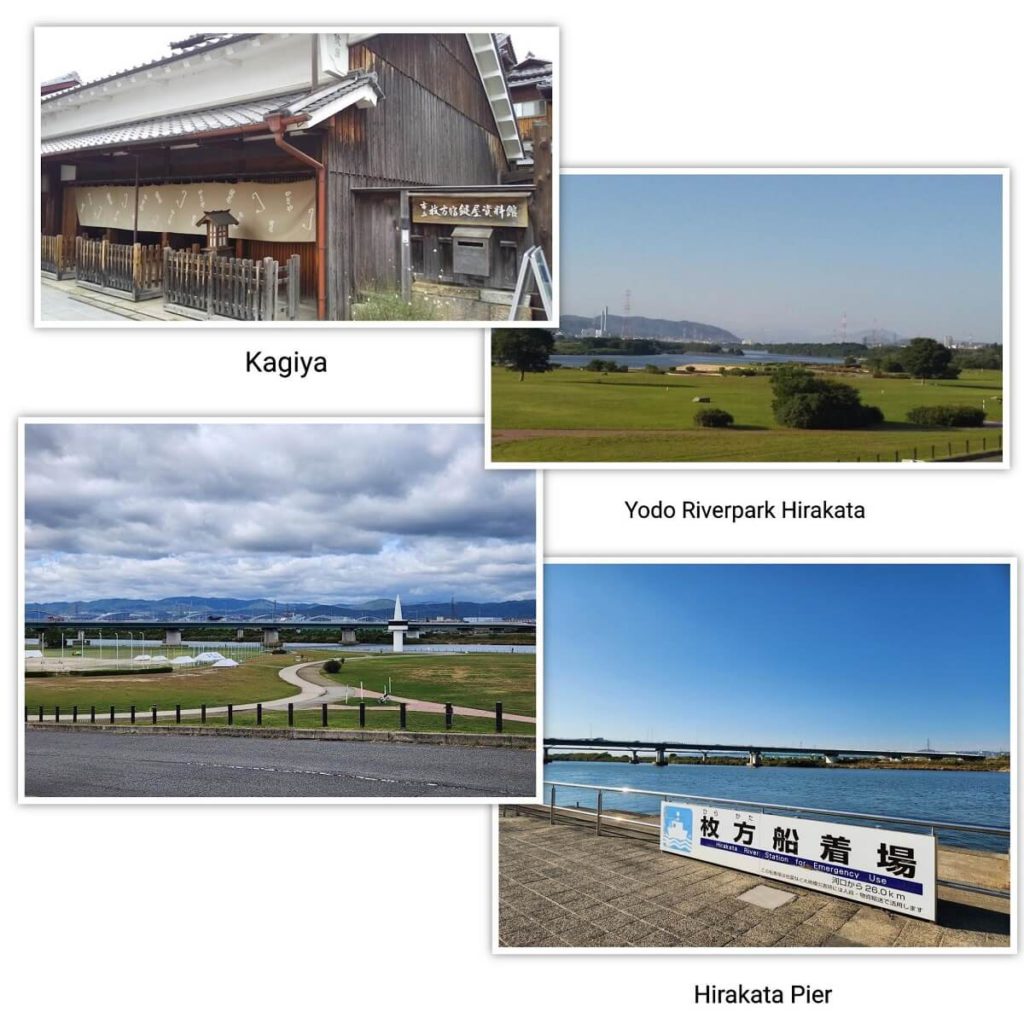
When I boarded the stylish Aqualiner, the boat was already full of passengers eating a prepared lunch. It was specially made by the traditional Japanese restaurant Fuji (割烹藤) to imitate what was eaten on the Sanjikkoku-bune (三十石船) of the time, wrapped in a bamboo leaf.
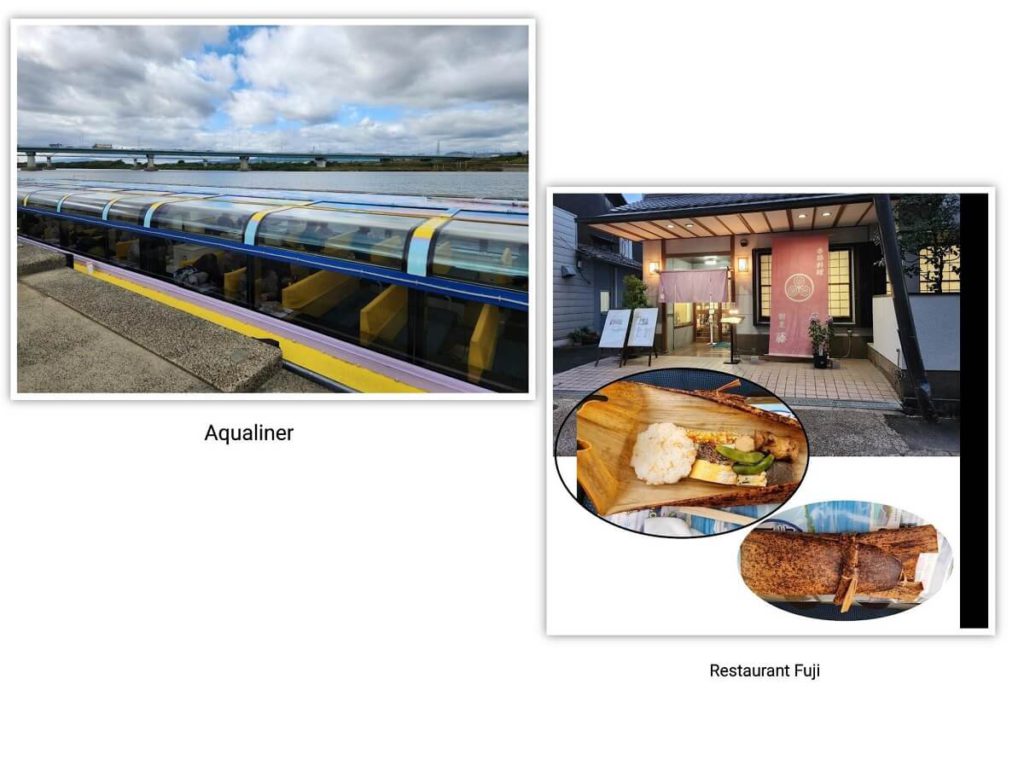
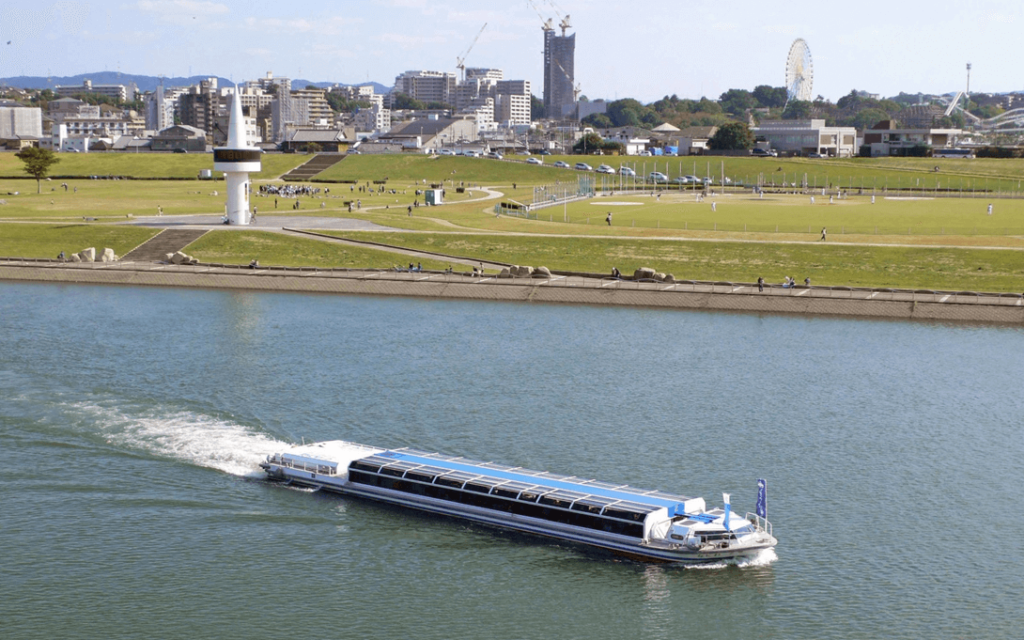
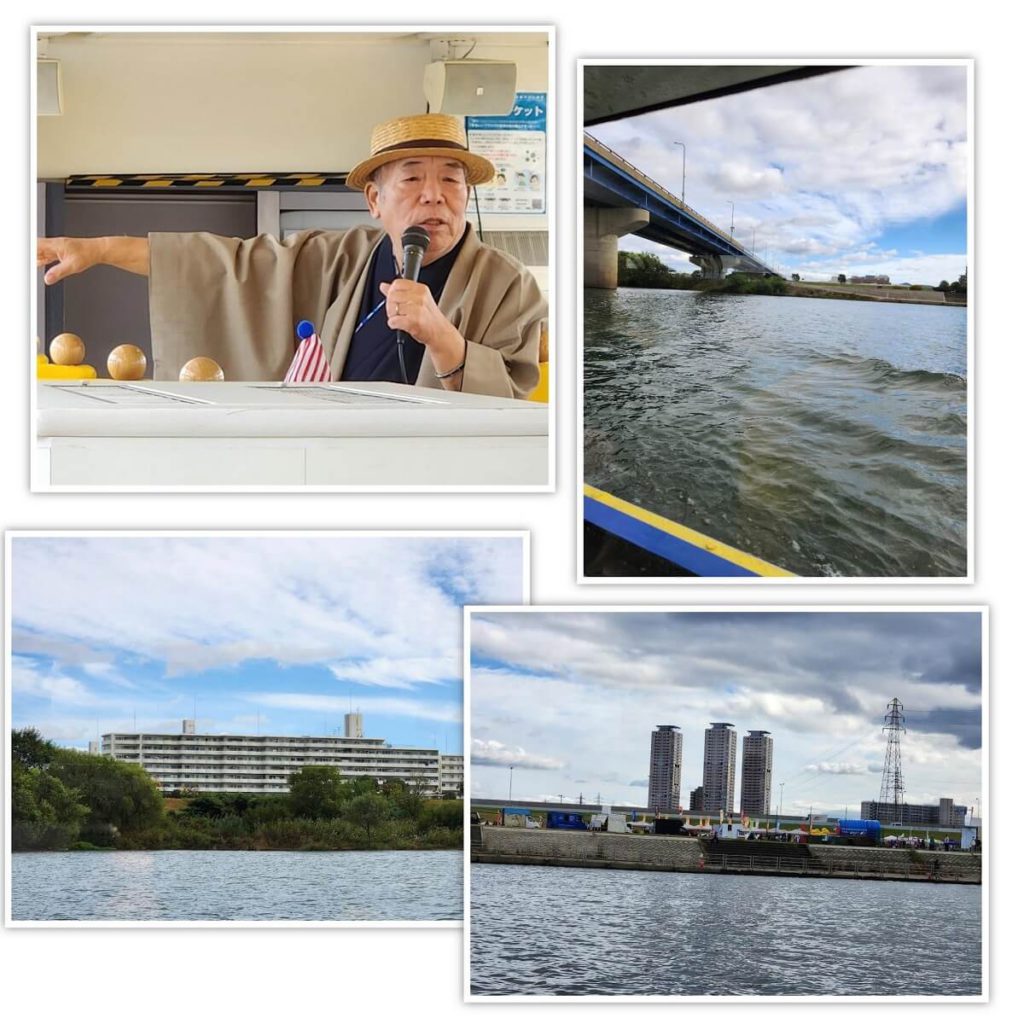
While viewing the Yodo River and Kyokaido Highway from the boat, we can listen to an experienced storyteller-guide talk in detail about the history, ecology, and disaster prevention of the Yodo River. (Only in Japanese)
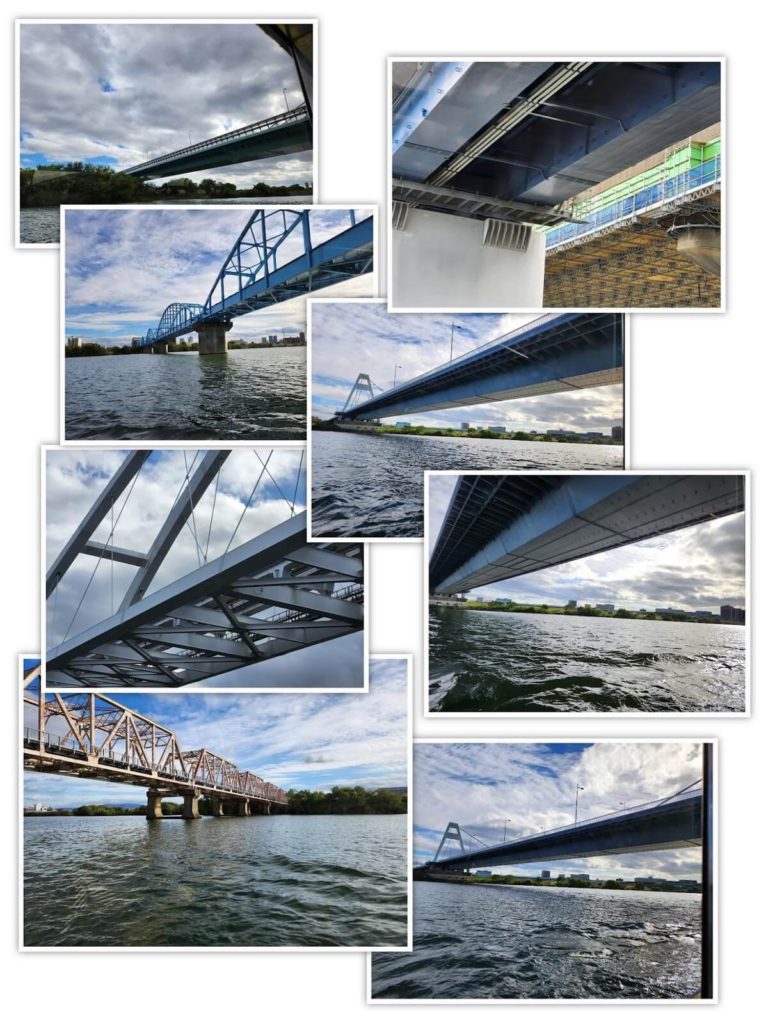
There are a number of bridges across the Yodo River, each with a different structure. The moment we passed under them was exciting.

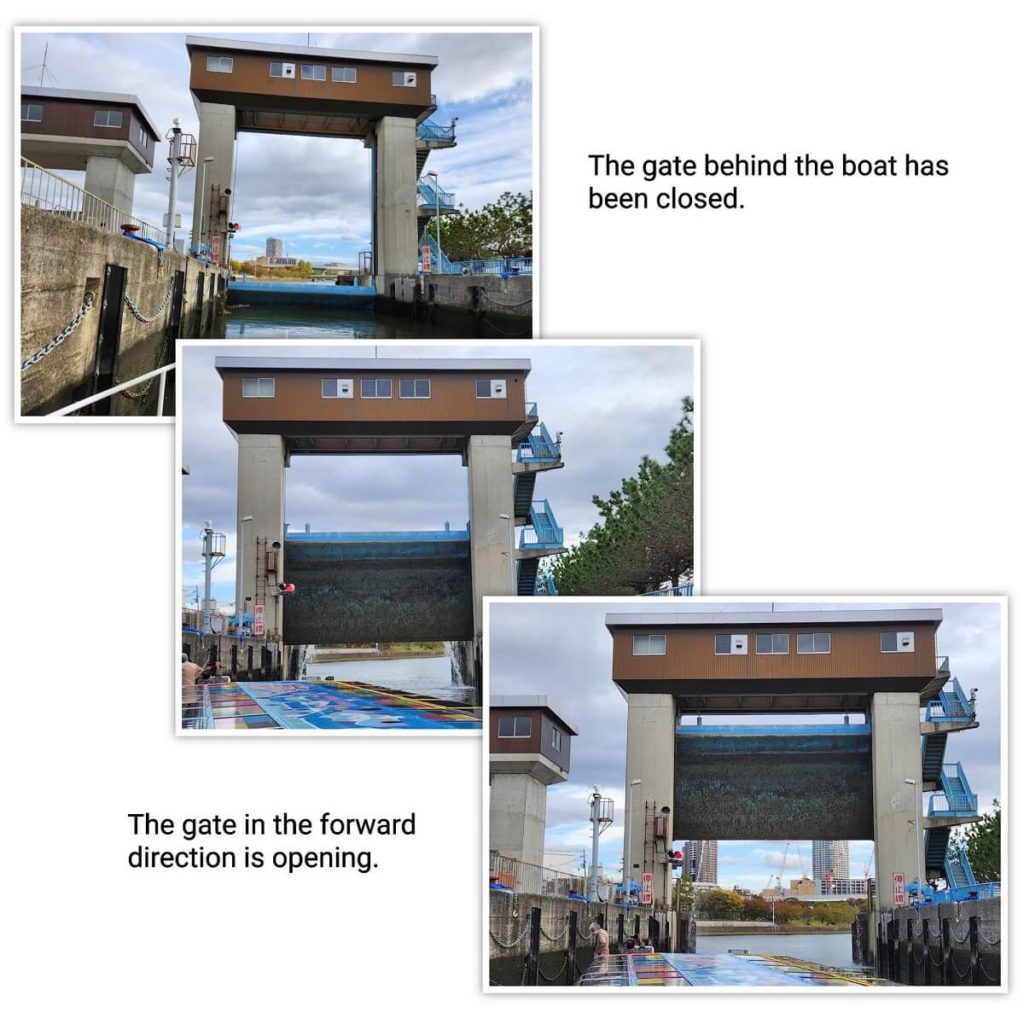
How the Lock Gate Works
Lock gates act as an elevator for boats between different water levels.
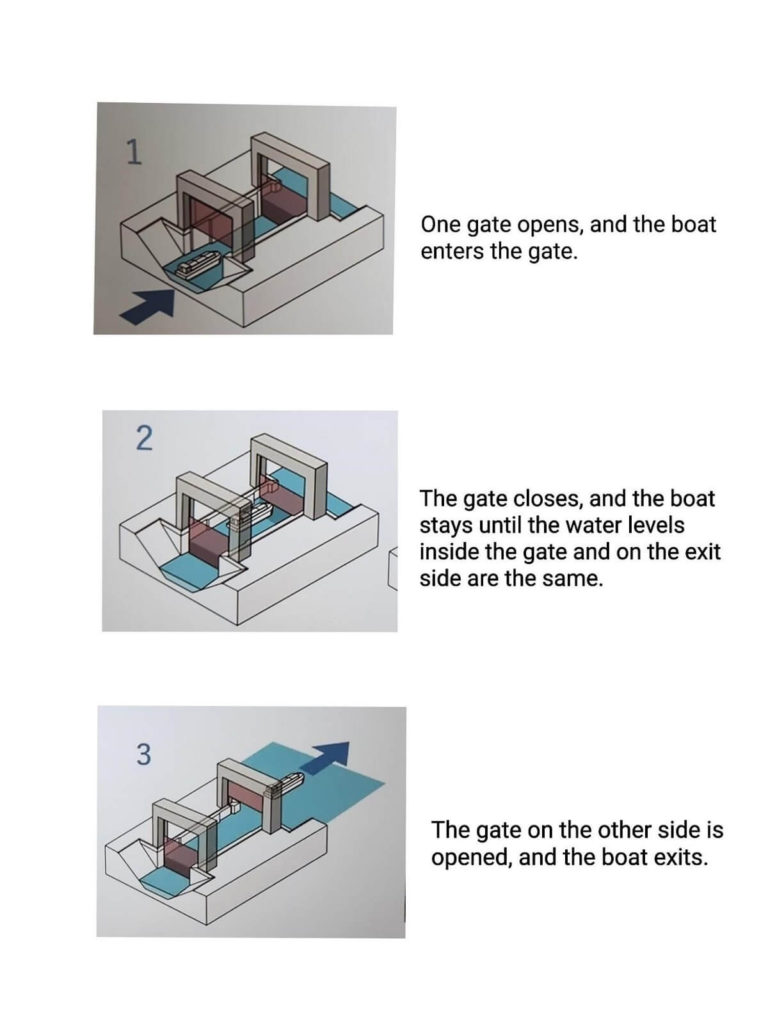
We are off the Yodo River and onto the Okawa (old Yodo River).
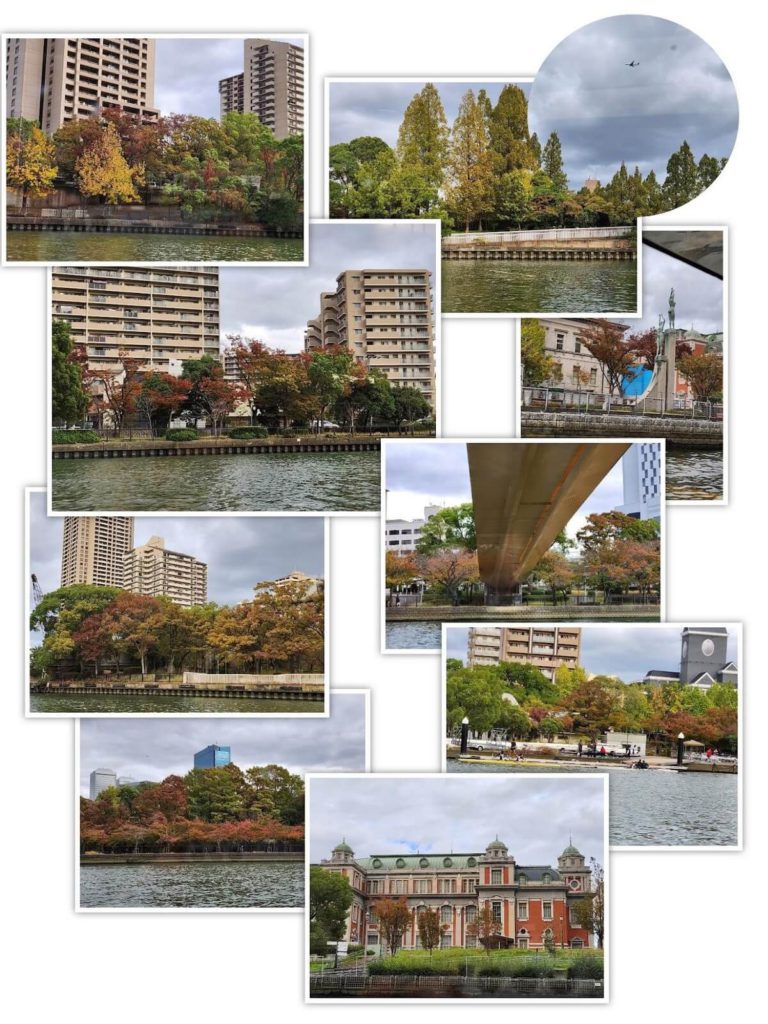
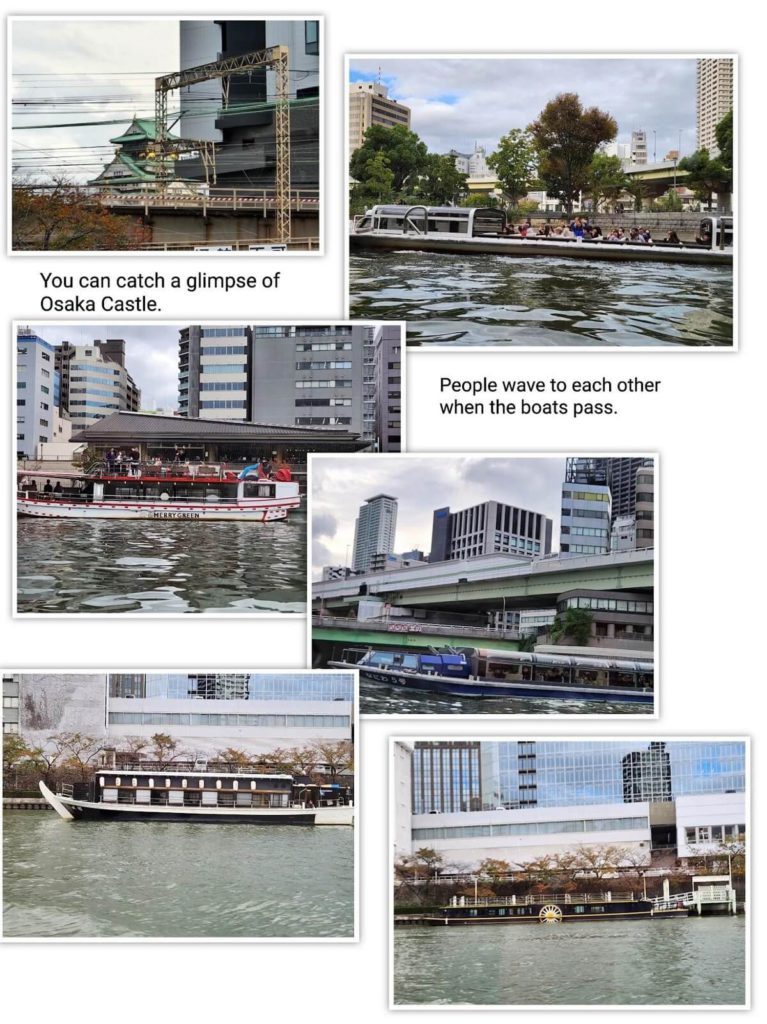
The city of Osaka is known as the Aqua Metropolis Osaka and offers several types of sightseeing cruises. You can enjoy the waterside scenery of the heart of Osaka full of nature, which is different from the typical image of Osaka. All cruises require reservations. For further information, please refer to the following link. An English version of the site is also available.
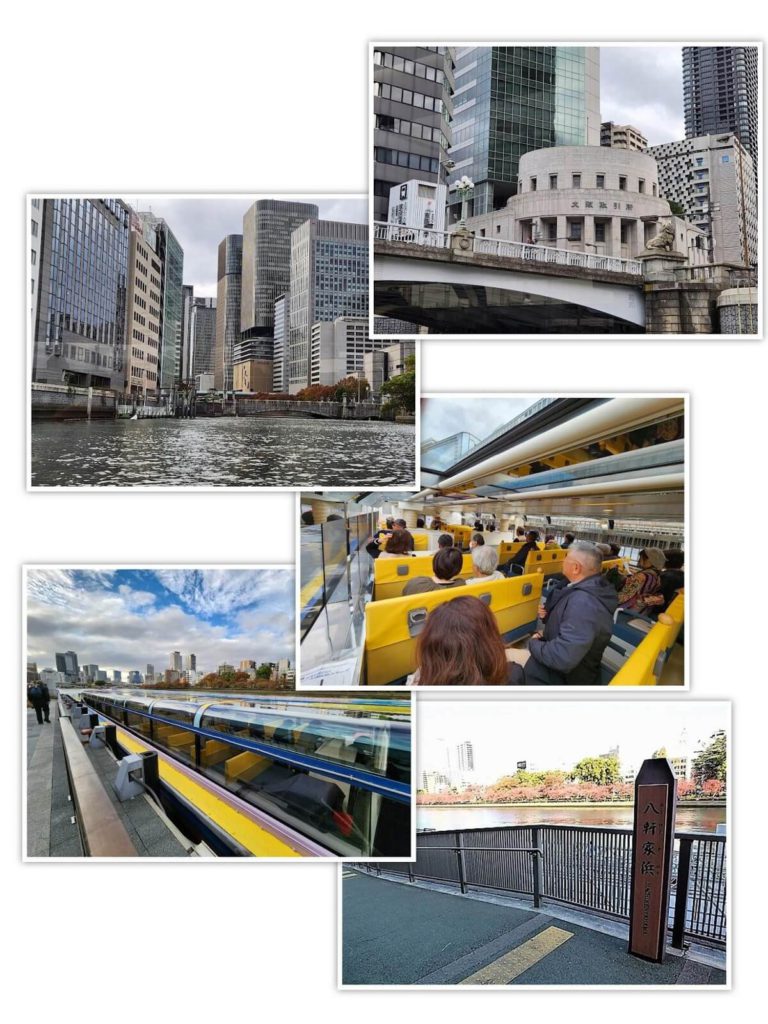
I enjoyed the leisurely two-and-a-half-hour boat trip, looking at the different landscapes from the water and thinking about the people of the past. The same distance can be covered in 20 minutes by Keihan Railway. In contrast, people in the Edo period traveled from Fushimi to Osaka by Sanjikkoku boats without motors. It took about half a day downstream and a day upstream. Can you imagine how hard they worked?
If you are interested in Sanjikkoku-bune, you can experience a sightseeing boat trip in the Fushimi district. Please read Rieko Azuma’s article. ↓
Fushimi Sake District in Kyoto
Yodogawa Museum (淀川資料館)
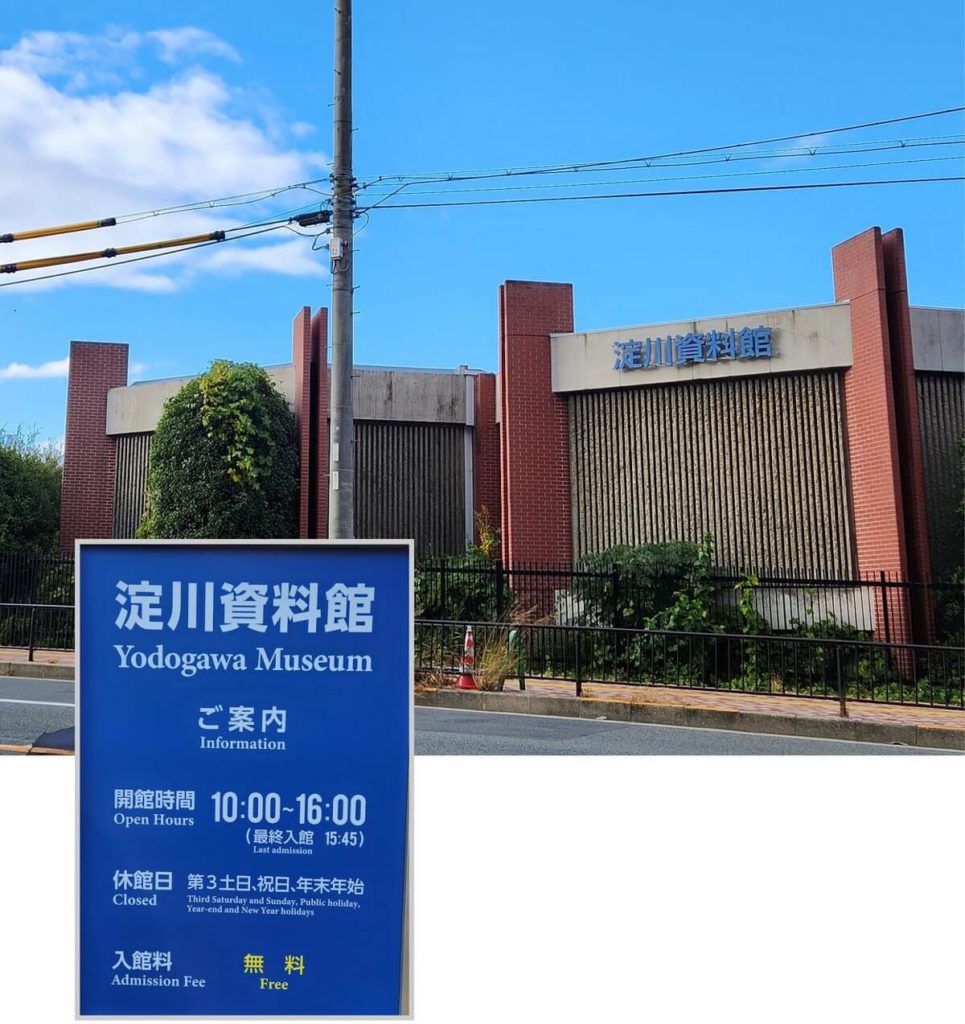
The Yodogawa Museum is a small but informative museum for children and adults. Visitors can learn about the ecology and history of the Yodo River, and how people have engaged with it.
Although the Yodo River is essential to people’s lives, it has flooded 230 times, including the great flood of 1885 (Meiji18), which caused significant damage to the surrounding area. Therefore, flood control projects such as building embankments, and dams, changing the flow of rivers, and digging river bottoms have long been carried out.
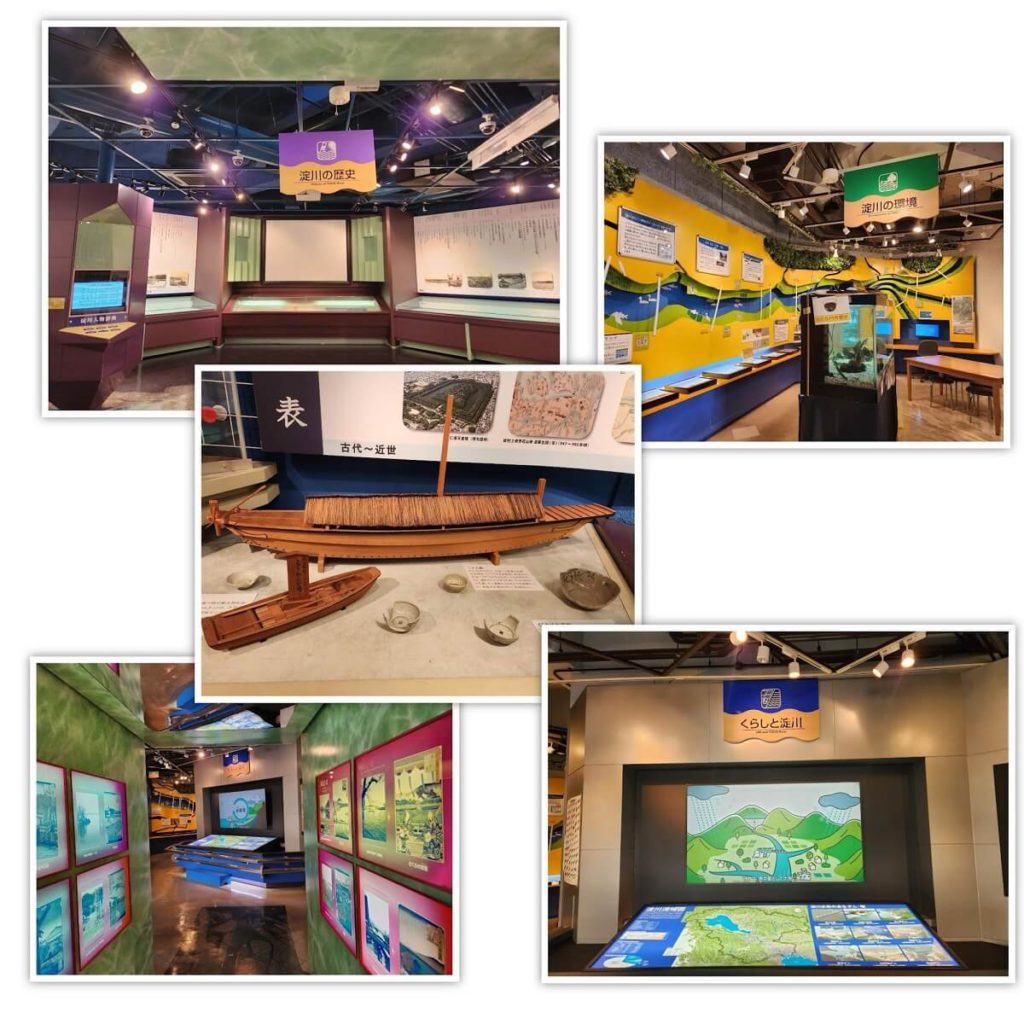
Throughout its long history, the Yodo River has seen constant efforts and measures to combat and mitigate water-related disasters. These works and initiatives are essential to ensure the safety of the region. They are major approaches to reducing and preventing unpredictable disasters that will likely continue to occur in the future.
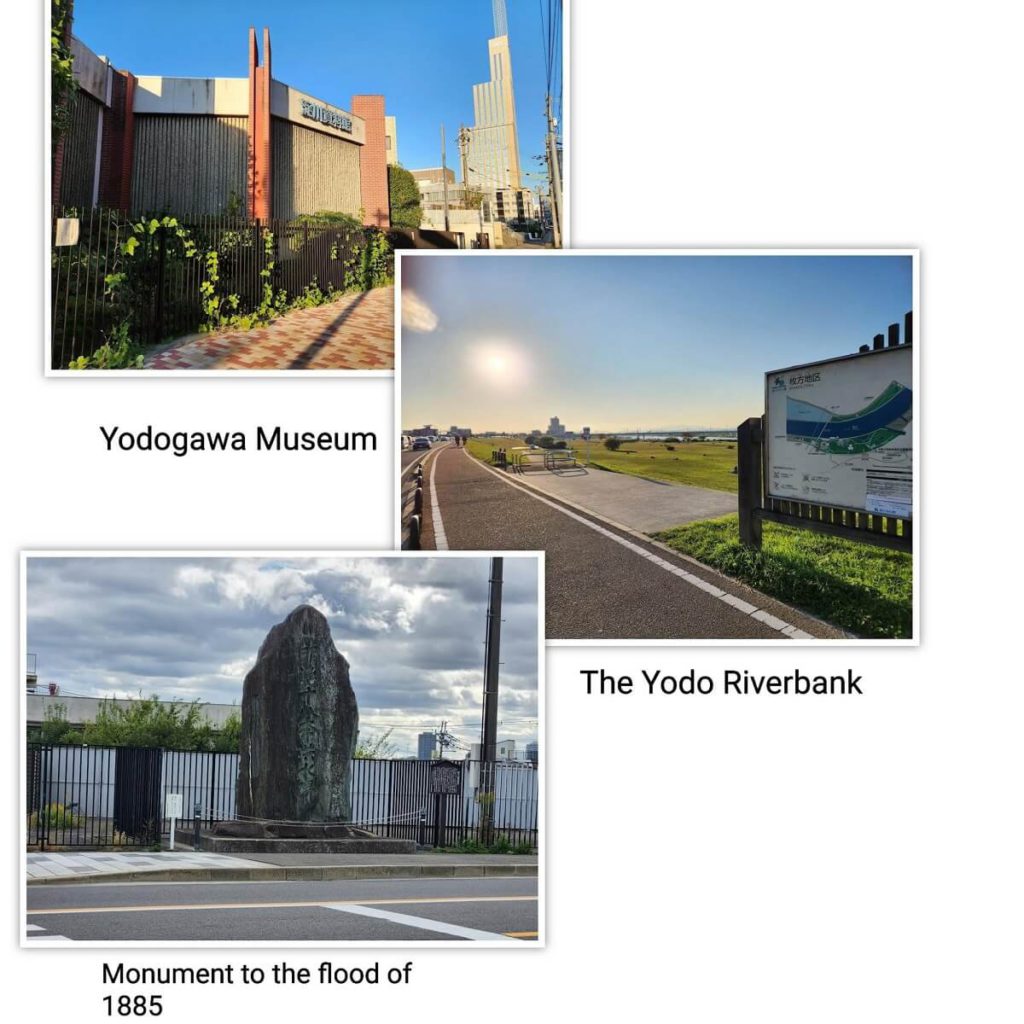
You will find the Monument and the Museum within a few minutes of walking along the riverbank.
Conclusion
I learned a lot through the Yodo River cruise which I took part in just for fun. The ease of our modern life is thanks to our ancestors’ wisdom and tireless efforts and should not be taken for granted.
The Yodo River is now being reconsidered as an emergency route. In the event of an earthquake, waterways will play an important role if roads and railways are blocked.
A large-scale construction project to build a new lock gate is now underway. When completed, this will provide a route from the Yodo River through Yumeshima (夢洲), which is the venue for the Osaka Kansai Expo in 2025. The system could also be used to transport emergency supplies in the event of a disaster, as well as earth, sand, and materials for river construction.


Lives in Takatsuki city, Osaka. Has been engaged in English for work and fun for years.



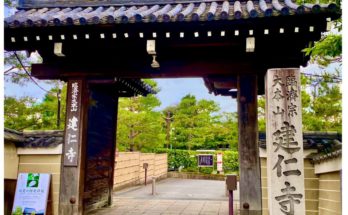
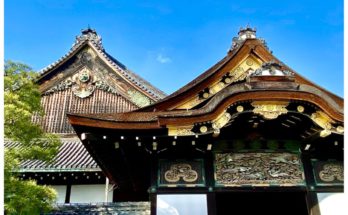
 HTJ has a YouTube page! Check it out
HTJ has a YouTube page! Check it out